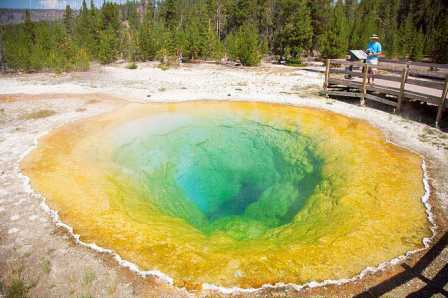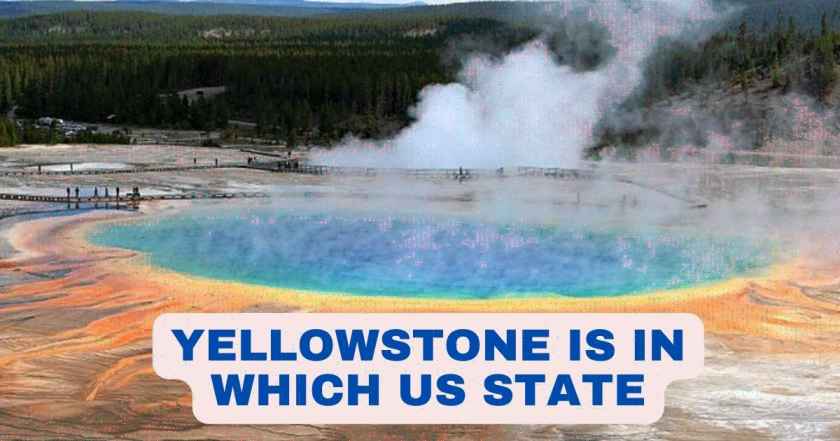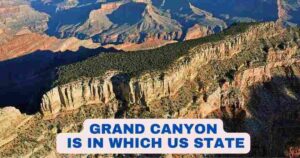Yellowstone What State
- Yellowstone is situated predominantly in the US state of Wyoming.
Yellowstone National Park’s majestic landscapes, captivating geothermal wonders, and abundant wildlife paint a picture of nature’s grandeur and complexity. Located predominantly in the state of Wyoming, this iconic park has left an indelible mark on conservation history as the world’s first national park. From the bubbling geysers to the roaming bison herds, every aspect of Yellowstone tells a story of the Earth’s geological processes and the intricate web of life that calls this place home. As we marvel at its beauty, let us also remember the importance of responsible stewardship to ensure that this natural wonder remains preserved for generations to come.

Yellowstone National Park in USA
Nestled in the heart of the United States, Yellowstone National Park stands as a testament to the breathtaking beauty and raw power of nature. Spanning over 2.2 million acres, this iconic park is renowned for its diverse landscapes, awe-inspiring geothermal features, and abundant wildlife. Situated predominantly in the state of Wyoming, with small portions extending into Montana and Idaho, Yellowstone has captured the imaginations of visitors for decades. In this blog, we’ll delve into the captivating world of Yellowstone, exploring its geological wonders, rich history, and the significance it holds as the first and oldest national park in the world.
A Geological Wonderland
Yellowstone’s landscape is dominated by a unique blend of geothermal features that are unlike anything found elsewhere on Earth. One of its most recognizable features is the stunning array of geysers, including the world-famous Old Faithful. These geysers erupt with impressive displays of boiling water and steam, offering a captivating glimpse into the Earth’s inner workings. The park’s geothermal activity is due to the presence of a massive supervolcano that lies beneath the surface, creating a hotbed of thermal energy.
The vibrant pools of hot springs paint the ground in shades of blue, green, and orange, a result of the diverse minerals and microorganisms thriving in the extreme conditions. The Grand Prismatic Spring, with its striking colors and enormous size, is a true marvel that attracts photographers and nature enthusiasts from around the world.
Wildlife Abundance
Yellowstone’s pristine wilderness provides a haven for an astonishing variety of wildlife species. The park is home to the largest concentration of mammals in the contiguous United States, including iconic species like grizzly bears, wolves, bison, and elk. The reintroduction of gray wolves in the 1990s marked a significant milestone in wildlife conservation efforts, helping to restore balance to the park’s ecosystem.
Visitors often find themselves in awe as they witness bison roaming freely across vast grasslands or catch a glimpse of a wolf pack on the hunt. The park’s diverse habitats, from forests to meadows to alpine regions, support a rich tapestry of life that has captivated researchers and nature lovers alike.
A Glimpse into the Past
Beyond its geological and ecological wonders, Yellowstone also carries a deep historical significance. Native American tribes have revered the area for centuries, recognizing its spiritual value and unique attributes. The first recorded expedition into the region was led by the Lewis and Clark Expedition in 1806, and their accounts introduced the world to Yellowstone’s awe-inspiring landscapes.
In 1872, President Ulysses S. Grant signed into law the Yellowstone National Park Protection Act, designating Yellowstone as the world’s first national park. This landmark decision paved the way for the conservation movement and the establishment of protected areas worldwide. The park’s historical sites, such as the Old Faithful Inn, showcase the architectural heritage of the early conservation movement and provide a glimpse into the park’s rich past.
Preserving a Natural Treasure
Yellowstone’s status as a national park places it under the care of the National Park Service (NPS), tasked with preserving its natural and cultural heritage for future generations. The NPS focuses on maintaining the delicate balance between protecting the park’s resources and providing access for visitors to experience its wonders firsthand.
Sustainable tourism practices have become increasingly important in recent years to ensure that the park’s ecosystems remain intact. Visitors are encouraged to follow Leave No Trace principles, respecting the wildlife and minimizing their impact on the environment. By promoting responsible tourism, Yellowstone can continue to thrive as a living laboratory for scientific research and a source of inspiration for all who visit.








